
A world's fair, also known as a universal exhibition or an expo, is a large global exhibition designed to showcase the achievements of nations. These exhibitions vary in character and are held in different parts of the world at a specific site for a period of time, typically between three and six months.

The Bureau international des expositions is an intergovernmental organization created to supervise international exhibitions falling under the jurisdiction of the Convention Relating to International Exhibitions.

Expo 2005 was a world expo held for 185 days between Friday, March 25 and Sunday, September 25, 2005, in Aichi Prefecture, Japan, east of the city of Nagoya. Japan has also hosted Expo '70 Osaka, Expo '75 Okinawa, Expo '85 Tsukuba, and Expo '90 Osaka and will host Expo 2025 Osaka . The site of the expo would become the Expo 2005 Aichi Commemorative Park after it ended and is now the home of Ghibli Park.
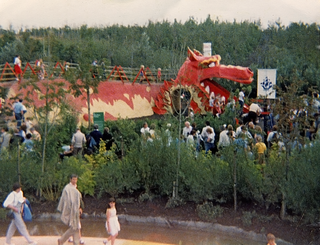
The International Garden Festival was a garden festival recognised by the International Association of Horticultural producers (AIPH) and the Bureau International des Expositions (BIE), which was held in Liverpool, England from 2 May to 14 October 1984. It was the first such event held in Britain, and became the model for several others held during the 1980s and early 1990s. The aim was to revitalise tourism and the city of Liverpool which had suffered cutbacks, and the idea came from Conservative Environment Minister Michael Heseltine. The festival was hugely popular, attracting 3,380,000 visitors.
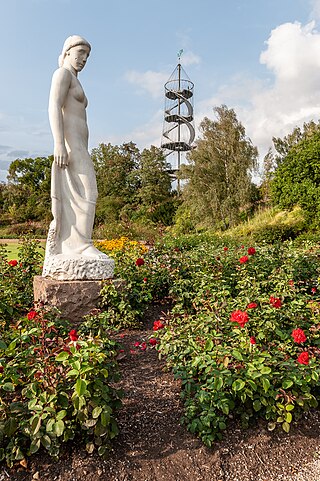
The Killesbergpark is an urban public park of half a square kilometre in Stuttgart, Germany. It is just north of the state capital, where Killesberg is a quarter of the borough of Stuttgart-Nord (North).
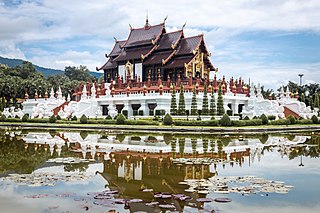
The Royal Flora Ratchaphruek was an international horticultural exposition held 1 November, 2006 to 31 January, 2007 at Queen Sirikit Botanic Garden in the Thai city Chiang Mai of Chiang Mai Province that drew 3,781,624 visitors. Recognised by the Bureau International des Expositions (BIE), it was one of the grand celebrations hosted by the Royal Thai Government in honor of King Bhumibol, the world's longest reigning monarch.

Planten un Blomen is an urban park with a size of 47 hectares in the inner-city of Hamburg, Germany. The name Planten un Blomen is Low German for "Plants and Flowers".

The 1999 World Horticultural Exposition was an A1 category international horticultural exposition recognised by the Bureau International des Expositions (BIE). Organised under the auspices of the International Association of Horticultural Producers, the event was held in Kunming, Yunnan, China. The theme of the exposition was "Man and Nature, marching into the 21st century."
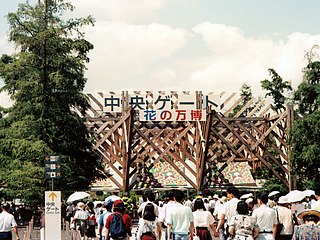
Expo '90 or The International Garden and Greenery Exposition, organized as a part of the International Expositions Convention, was the first large-scale international gardening exposition in Asia and focused on the theme of the "Harmonious Coexistence of Nature and Mankind." The exposition was held in Tsurumi Ryokuchi, Osaka for 183 days, from Sunday, April 1 to Sunday, September 30, 1990. The convention included participation from 83 countries and 55 international organizations and attracted over 23,126,934 visitors.

The Killesberg Tower is a 40-meter high observation tower located in the Killesberg Park in Stuttgart, Germany. Originally planned for the 1993 World Horticultural Exposition, an interruption in the design process delayed its erection until 8 years later in 2001.

Gärten der Welt is a public park in Marzahn, Berlin. It was opened on 9 May 1987 as Berliner Gartenschau and was renamed Erholungspark Marzahn in 1991, before adopting its current name in 2017. The total area encompasses more than 100 hectares.

The International Horticultural Exposition 1993 was held in Stuttgart, Germany. Recognised by the Bureau International des Expositions (BIE), the Expo ran from April 23, 1993, to October 17, 1993. Held at Wartenberg and Killesberg parks, the goal was to be visually and functionally integrated with two prominent features of Stuttgart's landscape, the Wartberg and the Leibfriedscher Garten. This was achieved. The long-term goal to create a U-shaped greenbelt around the city became a reality. The mascot of the horticultural show was "Flori", a bird in a cowboy hat. Overall, 7.3 million people visited the show, exceeding projections of 7 million.

The 2002 Floriade international horticultural exposition took place from April 6 to October 20, 2002, in Haarlemmermeer, Netherlands, with a theme of Contribution of Horticulture in the quality of life in the 21st century. Recognised by the Bureau International des Expositions (BIE), the festival covered 65 hectares and had 30 participating countries.

The 2003 World Horticultural Exposition was organized in the City of Rostock in Germany. It was the 17th international horticultural exposition which was recognized by the Bureau International des Expositions. The park was created in a derelict area around ruins of the former village of Schmarl, on the banks of the river Warnow. This made it possible to have a connection between water and gardens.
Floriade 1960 was a horticultural exhibition and garden festival held in Rotterdam, Netherlands which took place from 25 March to 25 September 1960 in Het Park near the Meuse River. It was the first edition of the Floriade to be organised under the auspices of the Association of International Horticultural Producers (AIPH) and also the first international horticultural exposition to be recognised by the Bureau International des Expositions.

The Parc floral de Paris is a public park and botanical garden located within the Bois de Vincennes in the 12th arrondissement of Paris. Created in 1969, the park remains the legacy of the international horticultural exposition, which was organised under the auspices of the International Association of Horticultural Producers (AIPH) and recognised by the Bureau International des Expositions (BIE). It is one of four botanical gardens in Paris, and is the site of major annual flower shows. The nearest metro station to the park is Chateau-de-Vincennes.
International Garden Expo 83 was a garden festival containing 170 exhibition contributors. The international horticultural exposition was recognised by the Bureau International des Expositions (BIE) and held from April 28 to October 9, 1983, at Westpark in Munich, Germany. Ralph Siegel wrote the Flower Serenade as official song of the exhibition; it was recorded by Hugo Strasser and his orchestra. The German Federal Post Office issued a special stamp with a stylized flower.

Floriade 1972 was a garden festival held in Amsterdam, Netherlands following its recognition by the Bureau International des Expositions (BIE). The 1972 exposition was the fifth edition of the international horticultural exposition organised under the auspices of the Association of International Horticultural Producers (AIPH) and the second Floriade in the Netherlands. The first Amsterdam Floriade lasted from March 30 to October 1, 1972.
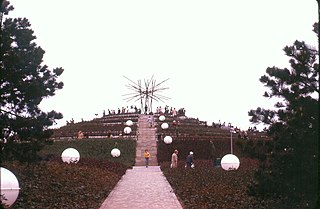
The Wiener Internationale Gartenschau 74, often shortened to WIG 74, was a garden festival held in Vienna, Austria. Recognised by the Bureau International des Expositions, the Expo was the second international horticultural exposition to be held in Vienna under the auspices of the AIPH. The plans for the Expo began to develop shortly after the closing of the WIG 64 held a decade earlier. Following the success of the 1964 exposition, the council was urged to re-organize a horticultural exhibition. An area on the south side of town that had once served as a recording field for silent films was ideally suited to create a large park. In 1969, architect Erich Hanke won an international design competition. He then formed several working groups of landscape architects from various countries, who made different designs for parts of the site. The best designs were incorporated into the grounds. A monorail was built to transport the visitors, but was eventually scrapped due to lack of success.
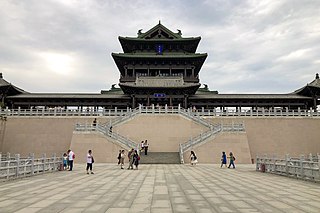
Expo 2019 was an international horticultural exposition presented by the Bureau International des Expositions and was held in Yanqing District, Beijing, China. Expo 2016 in Antalya, Turkey was the previous one. The exposition began on 29 April 2019 and closed on 7 October 2019. The site was 503 hectares, and 16 million visitors were expected.

















